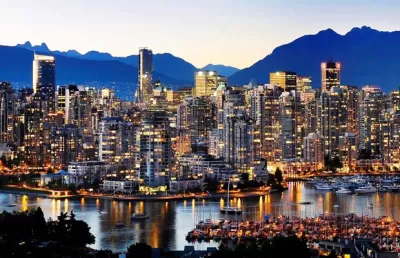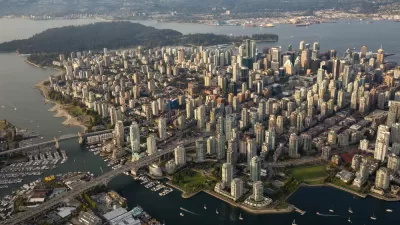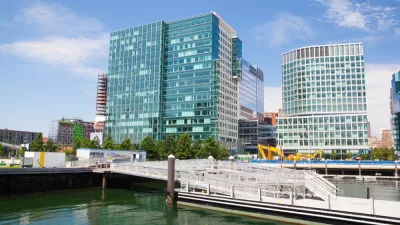"Ghost apartments" (empty apartments owned by rich foreign investors) have gotten a great deal of media coverage. But how common are they?

A few years ago, an article in Newsweek stated: "Across the globe, empty luxury apartments darken many of the most desirable cities—Miami; San Francisco; Vancouver, British Columbia; Honolulu; Hong Kong; Shanghai; Singapore; Dubai; Paris; Melbourne, Australia; and London. The reason: The world’s richest people are buying these grand residences not to live in but to store their wealth." This article is not unusual; quite a few articles claim that luxury towers around the globe are being turned into empty "ghost apartments."
Commentators are divided on how to handle this alleged problem; some cities have instituted or proposed taxes on second homes to discourage "ghost apartments," while others use their existence as an argument against new market-rate housing generally. For example, in an article criticizing supporters of new housing construction, Nicole Gelinas writes: "New York’s new luxury towers are notorious for being empty, owned by absentee millionaires and billionaires looking for an investment rather than a home." But how common is the "ghost apartment" problem?
A 2017 study from the London School of Economics suggests that even where foreign investment in housing is widespread, very few foreign-owned units are in fact "ghost units." The study found "almost no evidence of units being left entirely empty—certainly less than 1%." The authors of the study interviewed over a dozen building managers and developers in new buildings with high levels of foreign ownership; some stated that 90 percent or more of units were occupied, while one stated that 70 percent were fully occupied and 30 percent were used as second homes. The authors also interviewed concierges for four large new buildings; they estimated that between 50 and 75 percent of units were rented out, and that no more than 0-2 units per building were entirely unoccupied (p. 19). Based on this data, the authors estimated that roughly 70 percent of foreign-owned units were rented to Londoners. Thus, only 1,200 units, 6 percent of new housing units, were used by foreigners at all—including the units that foreigners actually reside in. The authors also explained the reasons behind the perceptions of high vacancy in the very newest developments: passers-by may think that a unit is vacant when in fact the units are in the process of being sold.
At first glance, a study of electricity use in Vancouver may suggest that "ghost apartments" are more common there. The study, conducted by an energy company for the city of Vancouver, sought to use electricity non-use as a test for ascertaining the number of truly vacant units in Vancouver—that is, it assumes that a unit that uses no or almost no electricity is vacant. The study found that 4.8 percent of Vancouver's housing units are not occupied—but that this percentage was actually lower than the 2002 percentage of non-occupied units (4.9 percent). If an explosion of foreign investment had caused an explosion of ghost apartments in recent years, presumably the number of non-occupied units would have risen over time—so the electricity study suggests that Vancouver has few if any such units.
Downtown Vancouver is especially notorious for ghost apartments—but the electricity study shows that the downtown vacancy rate is 6 percent, only slightly higher than the citywide average (p. 23). Downtown's vacancy rate is actually lower than it was in 2002 (6.9 percent). Flat or declining vacancy rates suggest that there is no explosion of ghost units.
Some commentators use overall vacancy rates as evidence of the "ghost apartment" theory: in New York, just over 70,000 apartments are vacant and used (according to the Census Bureau) for "seasonal, recreational or occasional" use (SROU). But in a city with 3.5 million housing units, this number is just a drop in the proverbial bucket. Furthermore, it is not clear how many SROUs 1) are truly unused (as opposed to being used as second homes by suburbanites, or as Airbnb rentals), 2) involve foreign investors, or 3) involve new units. Thus, the growth of this category does not necessarily support the widespread pearl-clutching over ghost apartments.
In fact, many SROUs are older housing units. According to the Census Bureau, only 15,283 housing units were built in Manhattan after 2010—less than one-third the number of SROUs in Manhattan. So at least 30,000 pre-2010 housing units are being used as SROUs.
What's the policy consequence of this fact? One common argument against new housing is the "induced demand theory" - the idea that new housing (especially high-rise condos) attracts foreign investors who will turn them into ghost apartments—but if the foreign investors are willing to purchase older units, this means that if the city refuses to permit the new condos, the foreign investors will not magically disappear. Instead, they will just start buying up older housing, outbidding locals for those units. On the other hand, my argument assumes that SROUs are indeed owned by foreign investors- which, as noted above, might not be the case.
In sum, it is not clear how many new apartments fit the "ghost apartment" stereotype of unused apartments owned by foreign investors. But at least a couple of studies suggest that this number is quite small.

Alabama: Trump Terminates Settlements for Black Communities Harmed By Raw Sewage
Trump deemed the landmark civil rights agreement “illegal DEI and environmental justice policy.”

Planetizen Federal Action Tracker
A weekly monitor of how Trump’s orders and actions are impacting planners and planning in America.

The 120 Year Old Tiny Home Villages That Sheltered San Francisco’s Earthquake Refugees
More than a century ago, San Francisco mobilized to house thousands of residents displaced by the 1906 earthquake. Could their strategy offer a model for the present?

LA’s Tree Emergency Goes Beyond Vandalism
After a vandal destroyed dozens of downtown LA trees, Mayor Karen Bass vowed to replace them. Days later, she slashed the city’s tree budget.

Sacramento Leads Nation With Bus-Mounted Bike Lane Enforcement Cameras
The city is the first to use its bus-mounted traffic enforcement system to cite drivers who park or drive in bike lanes.

Seattle Voters Approve Social Housing Referendum
Voters approved a corporate tax to fund the city’s housing authority despite an opposition campaign funded by Amazon and Microsoft.
Urban Design for Planners 1: Software Tools
This six-course series explores essential urban design concepts using open source software and equips planners with the tools they need to participate fully in the urban design process.
Planning for Universal Design
Learn the tools for implementing Universal Design in planning regulations.
Ada County Highway District
Clanton & Associates, Inc.
Jessamine County Fiscal Court
Institute for Housing and Urban Development Studies (IHS)
City of Grandview
Harvard GSD Executive Education
Toledo-Lucas County Plan Commissions
Salt Lake City
NYU Wagner Graduate School of Public Service





























